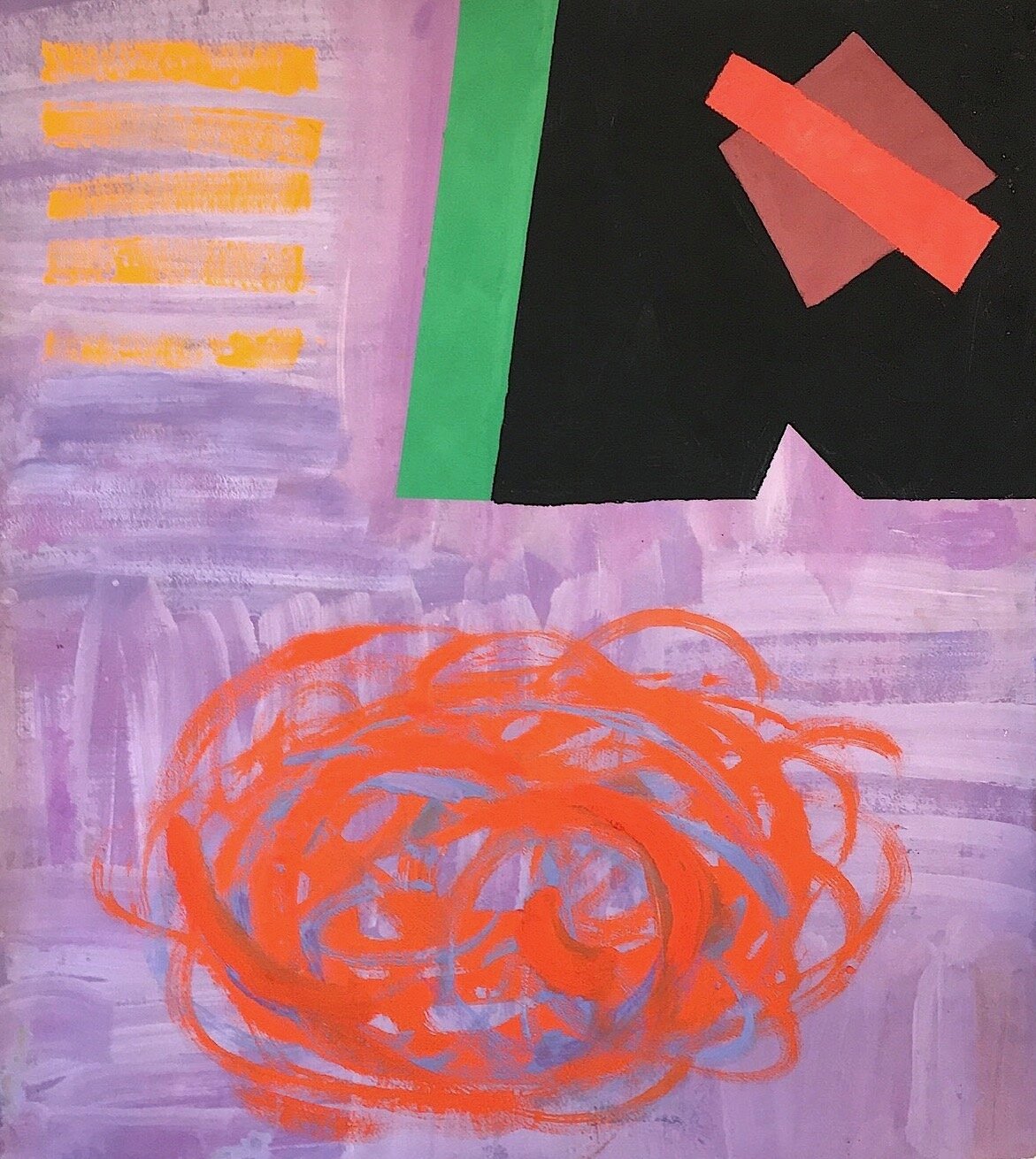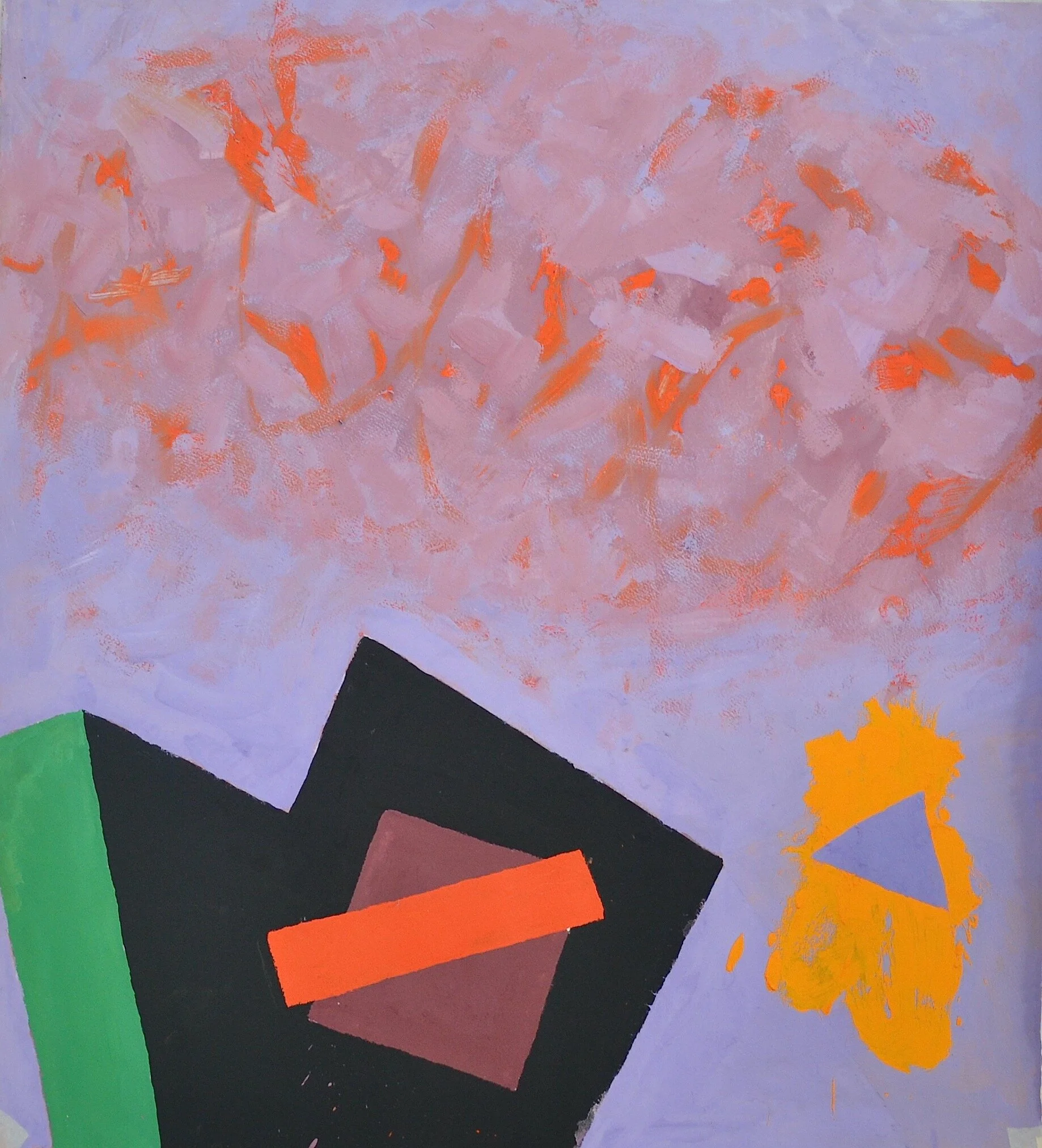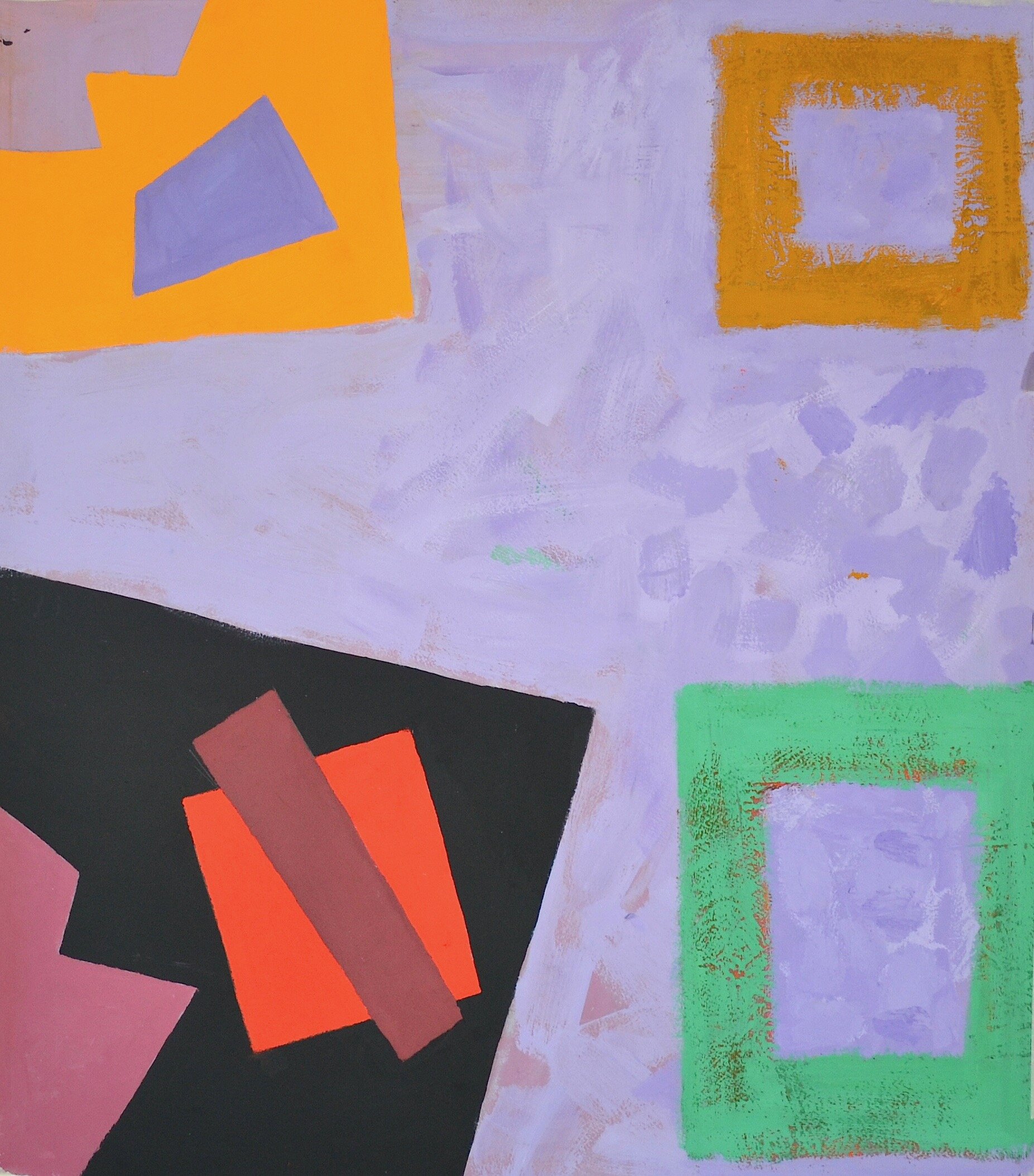Black March
Black March - Source Painting I (detail)
It’s the last day of the most upsetting month many of us can remember, and in London it’s a lovely, cloud scudding day.
In fact, most of March has been exceptional. The nice weather seemed to arrive just after the first day of spring, and just at the start of the UK lockdown. Now when I go outside for my daily allotted hour, clean air and clear light throw everything into sharp focus, and while this might be the contrast effect talking, lately nothing indoors seems half as interesting.
Like everyone obliged to stay inside I’ve sought ways to cope, mostly on social media, where I follow several artists. But recently I’ve started to pay more attention when artists post images of their work. Call it attentional bias, but right now seeing an artist’s work in progress is like witnessing an act of faith.
Perhaps that’s a bit maudlin, but what I mean is that artists know how hard it is to maintain focus and purpose in an apparent vacuum. Most of them don’t draw a line between solitude and isolation, because their studio is always both a haven and a prison. And every fresh canvas, sheet of paper, lump of clay holds both both promise and threat; if it could speak it would say, “make something new… make something, or else.”
The Canadian poet Anne Carson captured this tension, this constant contradiction between the need to communicate and the lack of an audience in her epigram, Sonnet Isolate, which ends:
‘Whatever idea here rises from its knees/to turn and face you quicker than a kiss/…/will ask of you most of your cunning and a deep blue release like a sigh/while using only two pronouns, ‘I’ and ‘not-I.’
That phrase ‘deep blue release like a sigh’ immediately made me think of paintings by David Seaton, who is an exceptionally innovative colourist. So a few days ago I called him and asked if I could see his new work.
David is English, but lives near Ronda in Andalusia, which, like the rest of Spain, has been on strict lockdown for most of March.
“We can’t go out at all now, certainly not for walks”, he said. “In fact, it’s really only allowed if you need food or medicine, and if you’re driving you can’t have passengers. You could be fined.”
Fortunately, his studio is part of his home, Ventorillo Mariano, a former roadside inn that has stood for over 500 years (in one form or another) in a rural neighbourhood known as La Indiana. Most of his windows open onto views of rolling hills foregrounded by cacti, furrowed dirt and tangled vines. The transformative effects of seasonal light and atmosphere on these landscapes - whether nearby farmlands or the mountains of the Serranía de Ronda - has long been a focus of his work.
David’s paintings are consistently graphic, powered by pure colour and clear, essential forms, a style influenced by his early career as a sculptor. He uses a boldly formal technique combining pure, dry pigments, high-quality PVC binders, and collage.
“It’s quite sculptural. It’s physical, improvisational, and there’s a randomness to it, so it can be destructive as well. But collage is a great way to self-correct, as so many artists from Matisse to Lee Krasner knew.”
Collage is also a great way to push abstraction while keeping at least an hint of the figurative, something David’s charcoal studies of the Serranía illustrate beautifully. (While I’ve never actually heard him use the word pareidolia to describe his work, it’s definitely there.)
Arguably, this formal subtext also runs throughout his new paintings. But what I found fascinating was how it appears in the series, because in their various suggestions of form, the paintings seemed to shift from landscape to interior, and then back again.
David began with three core (or Source) compositions - the first painted, the second and third painted with collage - each abstracted from the changing winter landscape as seen just outside his home.
“In winter, the light can be so clear and sharp, it seems to fall on the hills like shards,” he said. “The overall effect is almost violent. The colours, the patterns of form and structure shift into something refracted. Things take on a life of their own and it can be literally dazzling. So this was my starting point.”
“In each painting, I broke down the landscape to three or four strata. Then I divided these into further sections that I reimagined as separate facets, or vectors, and I mean that in a mathematical sense. Each facet of the landscape defines its own space in time, its own point in reality.”
“What unites all of the pictures - which are still in progress, don’t forget - it this liminal sense I felt so strongly looking at the landscape. So that’s why I used washes of ultramarine violet, a colour that almost always suggests spring. But that actually is the colour of the light now. This time of year, when the visible spectrum shifts so strongly to the left, it intensifies the colour of the soil. It makes the earth appear to come alive.”
Farmland outside Ronda, March 2020
In the Source paintings, Seaton’s cut and painted forms might suggest musical notation, language or abstract communication (e.g. cuneiform or nautical signalling), possibly even kites.
But when he excised these shapes and reconfigured them in the first three Vector paintings, his compositions arguably read as interiors, with suggestions of table tops, windows or stairs. Finally, in Vector VIII, the forms seem to return outside, and might be read from above.
When I first saw these paintings, I immediately sensed something evanescent, even urgent behind them, but I couldn’t put my finger on it. Likewise, while I felt my perception being pulled in two different directions, I hadn’t a clue why.
I just knew that looking at these pictures made me happy, and a little bit nervous.
Then my sense memory kicked in: ultramarine violet… March… the fact that for weeks now violets had been poking out of the ground stubbornly, and yet I’d barely noticed them. Likewise, Seaton’s repeated counterpoints of black… how they intensified the grass green and appeared to punch air holes in his planar compositions.
David’s pictures upset me in best possible way, because at the end of this awful, extraordinary month, they reminded me of Black March by Stevie Smith, a poem that begins:
‘I have a friend/ At the end/ Of the world./ His name is a breath/ Of fresh air,’ and continues, ‘I have not seen his face./ But I have seen his eyes, they are/ As pretty and bright/ As raindrops on black twigs/ In March…’
I mentioned Smith’s poem to David and suggested it as a title. He agreed, and allowed me in this small way to help him, just as his pictures, in a far greater way, had helped me, raising my spirits during this long weird month.
I’ll look forward to seeing how his series evolves, and writing more about it.




















